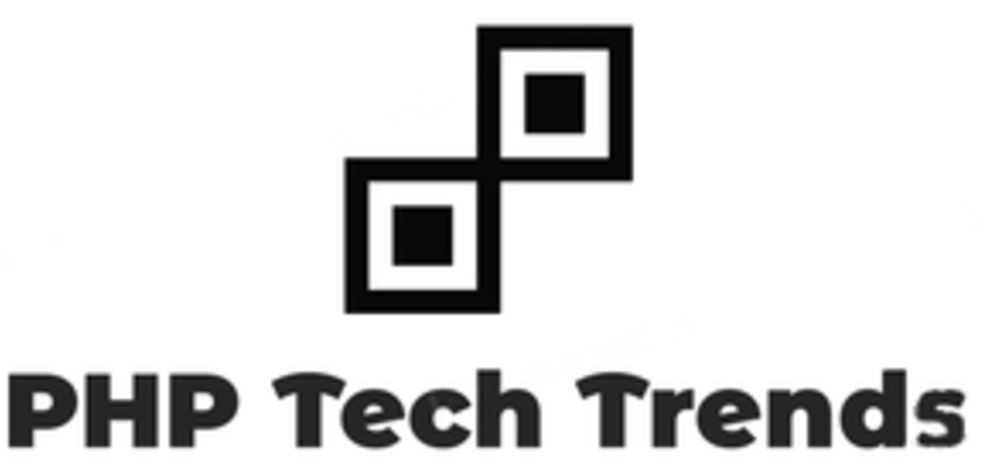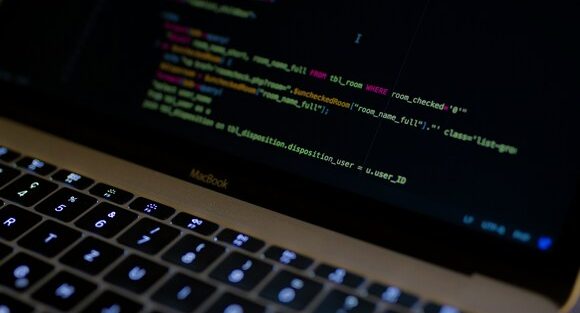Welcome to the exciting world of PHP and IoT! In this blog post, we will explore the incredible benefits and endless possibilities that arise from integrating PHP with IoT devices. It’s a match made in tech heaven, combining the power of PHP’s robust web development capabilities with the interconnectedness of smart devices. So buckle up as we dive into how this dynamic duo can revolutionize our lives with innovative smart solutions. Get ready to witness the magic unfold before your eyes!
Benefits of Integrating PHP with IoT Devices
One of the major benefits of integrating PHP with IoT devices is the ability to leverage the robustness and versatility of PHP in developing smart solutions. PHP, being a widely used programming language for web development, brings its rich ecosystem of tools, frameworks, and libraries to the world of IoT.
By combining PHP with IoT devices, developers can quickly build scalable and secure applications that connect various sensors, actuators, and other smart devices. This allows for real-time monitoring and control of these devices remotely. Moreover, as PHP is known for its ease-of-use and rapid development capabilities, it enables faster prototyping and deployment of IoT projects.
Another advantage is the flexibility offered by PHP’s support for different data formats like JSON or XML. This makes it easier to exchange data between IoT devices using different protocols such as MQTT or REST API. Additionally, PHP’s extensive database integration allows seamless storage and retrieval of sensor data from databases like MySQL or MongoDB.
Integrating PHP with IoT opens up opportunities for leveraging existing web technologies such as HTML5,CSS3,and JavaScript to create intuitive user interfaces (UI) that interact with IoT applications. This means users can easily monitor device status or control them through web browsers on any device without needing specialized software.
Use Cases for Smart Solutions with PHP and IoT
Smart solutions powered by the integration of PHP with IoT devices have revolutionized various industries, enhancing efficiency, automation, and connectivity. Let’s explore some exciting use cases where this powerful combination is making a significant impact.
- Home Automation: Imagine controlling your lights, thermostat, security systems, and even kitchen appliances seamlessly through a single platform powered by PHP and IoT technology. With smart home solutions, you can create personalized settings to suit your preferences while optimizing energy consumption.
- Industrial Monitoring: By integrating PHP with IoT devices in industrial settings, businesses can monitor equipment performance in real-time. This enables predictive maintenance strategies that help prevent costly breakdowns and minimize downtime.
- Healthcare Applications: The healthcare industry has also seen immense benefits from PHP-IoT integration. From remote patient monitoring to wearable devices that track vital signs or medication adherence, these smart solutions improve patient care while reducing hospital visits.
- Agriculture Management: Farmers can optimize their crop yield using smart irrigation systems that analyze weather data and soil conditions in real-time through the power of PHP-IoT integration. This ensures efficient water usage while promoting sustainable farming practices.
- Traffic Management: Cities are utilizing the power of connected sensors integrated with PHP to gather traffic data such as vehicle counts and speeds for better traffic management planning. Real-time analysis allows authorities to implement dynamic signal control systems improving traffic flow.
- Energy Conservation: Smart grids enabled by integrating PHP with IoT technology allow utility companies to collect data on energy consumption patterns accurately. They can then adjust supply accordingly to reduce wastage and encourage sustainable energy practices.
- Data Analytics & Business Intelligence : Businesses can leverage the vast amount of data collected from interconnected devices via the combined power of PHP-IoT integration to gain valuable insights into consumer behavior patterns . Utilizing advanced analytics tools , they can make more informed decisions , identify market trends , predict customer demand etc .
Step-by-Step Guide for Integrating PHP with IoT Devices
Step 1: Understand the Basics
Before diving into the integration process, it’s important to have a solid understanding of both PHP and IoT. PHP is a popular programming language used for web development, while IoT refers to the network of physical devices connected to the internet. Familiarize yourself with their concepts and functionalities.
Step 2: Choose Your IoT Device
There are numerous IoT devices available in the market today, ranging from smart thermostats to wearable fitness trackers. Select an IoT device that aligns with your desired smart solution project. Make sure it has support for PHP integration or can be programmed using languages compatible with PHP.
Step 3: Establish Communication Protocols
To enable communication between your chosen IoT device and PHP scripts, you need to establish suitable protocols such as MQTT or HTTP REST APIs. Research which protocol is supported by your device and choose one that suits your project requirements.
Step 4: Set Up Your Development Environment
Install a local server environment like XAMPP or WAMP on your computer if you haven’t already done so. This will allow you to run PHP scripts locally for testing purposes before deploying them onto live servers.
Step 5: Develop and Test Your Integration Code
Start developing your integration code in PHP by leveraging libraries or SDKs provided by the manufacturer of your IoT device. These resources often include sample code snippets that can serve as a starting point for building more complex functionality.
Step 6: Deploy and Monitor
Once you’re satisfied with your integration code, deploy it onto live servers or cloud platforms depending on where you plan to host it. Ensure proper monitoring mechanisms are set up so that any issues or errors can be promptly identified and addressed.
Remember, this step-by-step guide offers a general framework for integrating PHP with IoT devices but may require customization based on specific hardware/software combinations. Always consult official documentation provided by manufacturers for detailed instructions tailored to their products.
Future Possibilities for PHP and IoT Integration
The integration of PHP with IoT devices opens up a world of possibilities for the future. With advancements in technology and the increasing popularity of smart solutions, the potential for innovation is endless.
One exciting prospect is the development of intelligent home automation systems. Imagine being able to control all aspects of your home – from lighting and temperature to security and entertainment – through a single PHP-based interface. This would not only enhance convenience but also improve energy efficiency and overall comfort.
Another area where PHP and IoT integration could revolutionize is healthcare. By connecting medical devices, such as wearable monitors or implantable sensors, to PHP platforms, healthcare professionals can remotely monitor patients’ vital signs and provide real-time feedback or alerts. This has the potential to greatly improve patient care, especially for those with chronic conditions or in remote areas without easy access to medical facilities.
Integrating PHP with IoT devices can have significant implications for transportation systems. By equipping vehicles with sensors that communicate data back to a central PHP platform, traffic patterns can be analyzed in real-time, allowing for better route planning and congestion management. Moreover, this integration could enable autonomous vehicles to communicate seamlessly with each other on the roadways.
Industries like agriculture stand to benefit from this convergence as well. With connected sensors placed throughout farmland or greenhouses, farmers can gather data on soil moisture levels, temperature variations, pest infestations etc., which could then be processed by a PHP platform equipped with machine learning algorithms providing insights that enable precise irrigation schedules or targeted pesticide applications.
These are just a few examples of how integrating PHP with IoT devices holds immense promise for future developments across various sectors. As technology continues to advance rapidly and more innovative solutions emerge, the opportunities will only increase further.
Conclusion
In this digital age, the integration of PHP with IoT devices has opened up a world of possibilities for creating smart solutions. By harnessing the power of PHP’s versatility and IoT’s connectivity, businesses and individuals can develop innovative applications that enhance our everyday lives.
Throughout this article, we explored the benefits of integrating PHP with IoT devices. We discussed how this combination allows for real-time data processing, streamlined communication, and improved decision-making. Whether it’s controlling home appliances remotely or monitoring industrial processes, PHP empowers developers to create intelligent solutions that drive efficiency and convenience.
We also delved into various use cases where the integration of PHP with IoT devices is already proving its worth. From energy management systems to healthcare monitoring tools, these examples demonstrate how combining PHP with IoT technology can revolutionize different industries.
To help you get started on your own journey toward building smart solutions using PHP and IoT devices, we provided a step-by-step guide outlining the key steps involved in the integration process. By following these instructions carefully, you’ll be well on your way to developing cutting-edge applications that connect physical objects to the digital world seamlessly.
Looking ahead, there are boundless opportunities for further innovation in terms of integrating PHP with IoT technology. As more devices become connected and new advancements emerge in both fields, we can expect even greater synergy between them. The future holds exciting prospects for enhancing automation capabilities across industries such as manufacturing, transportation systems optimization, agriculture management systems – just to name a few.
Integrating PHP with IoT devices today and embracing its potential tomorrow will undoubtedly enable us to build smarter solutions that transform our lives positively while driving progress towards a more connected world.

